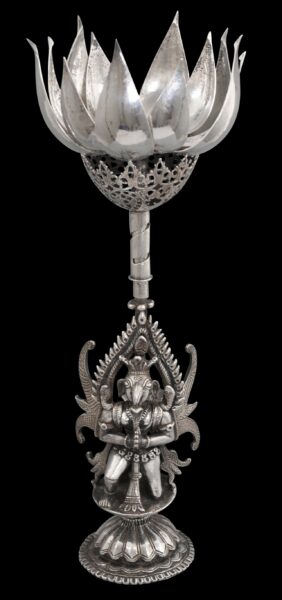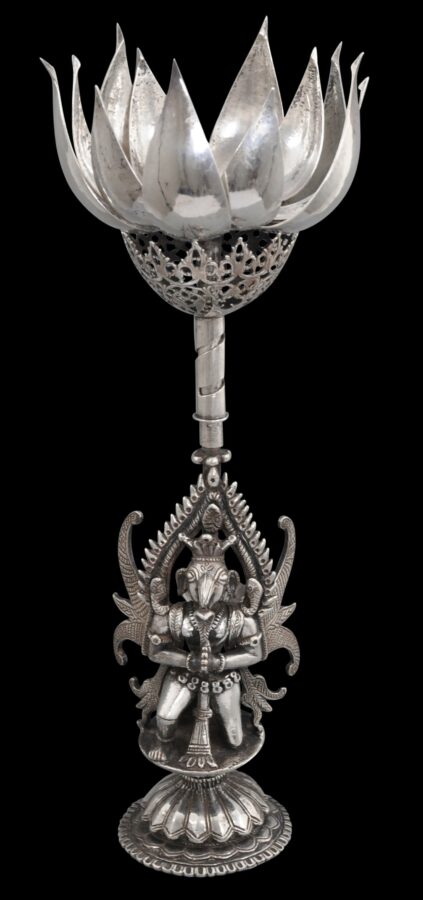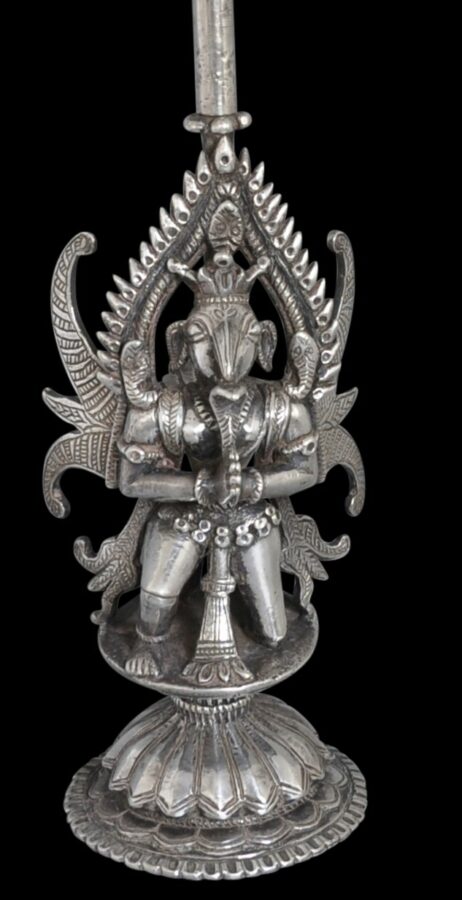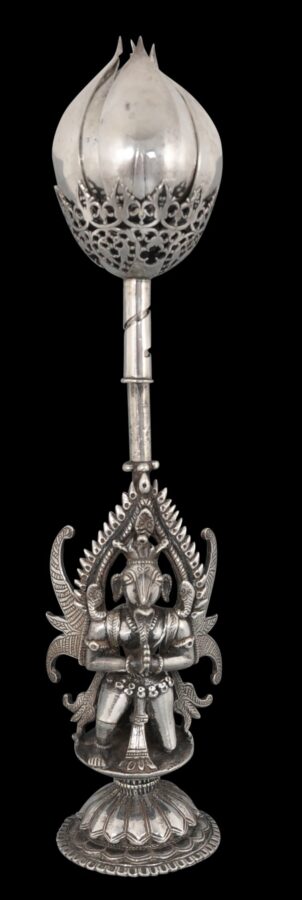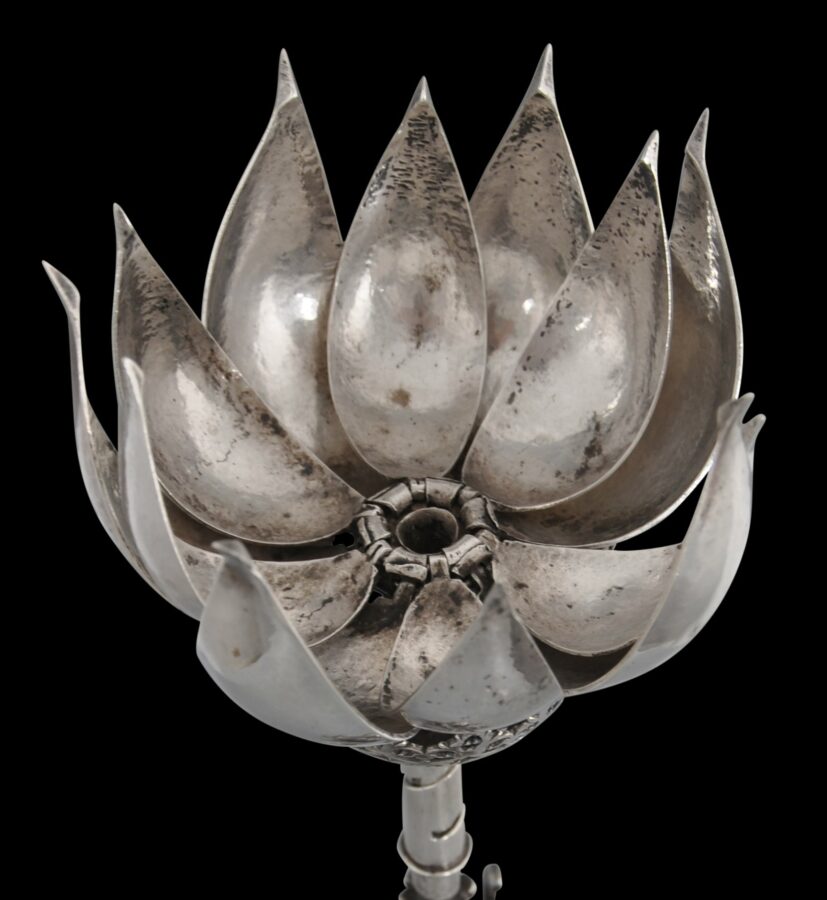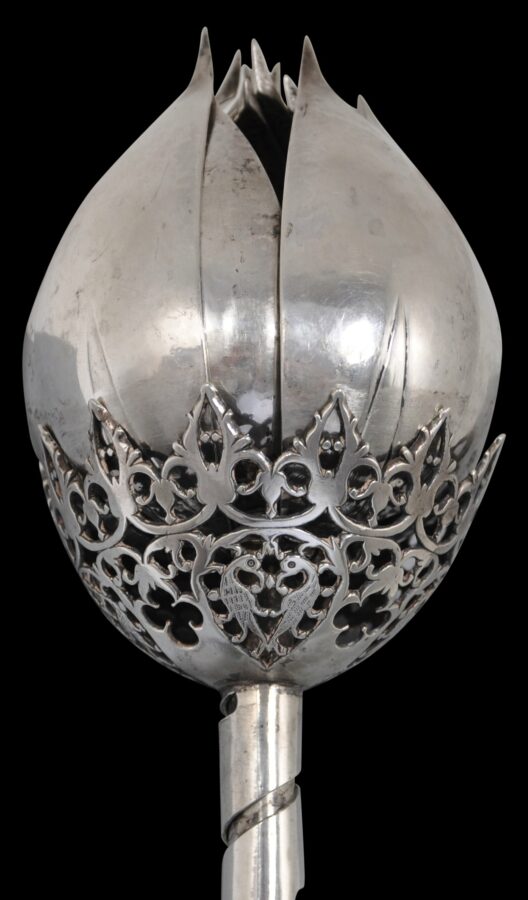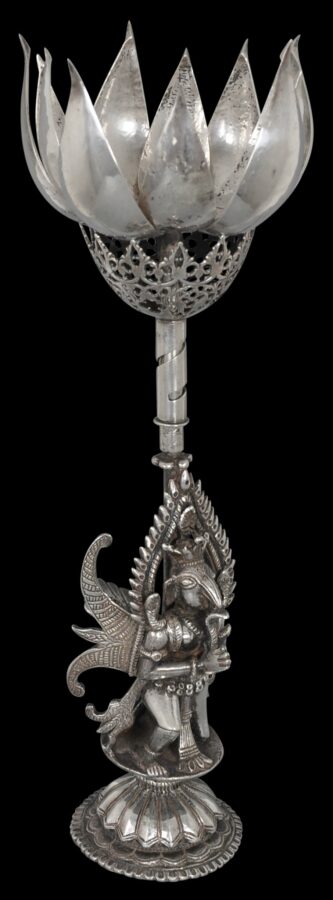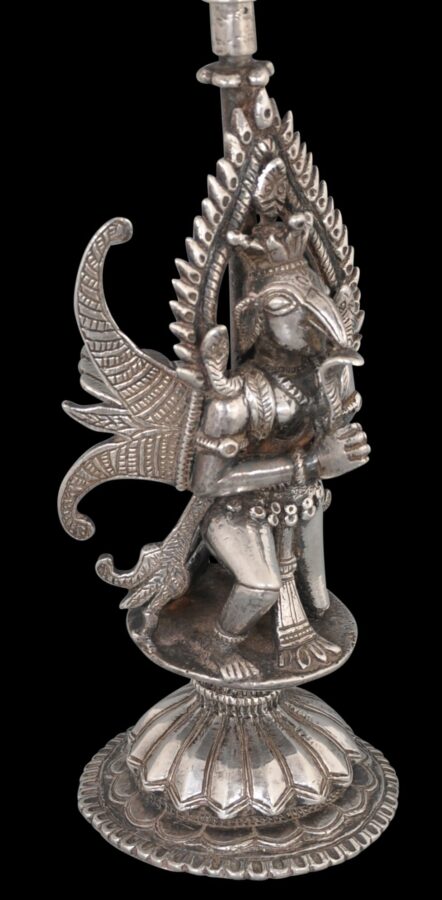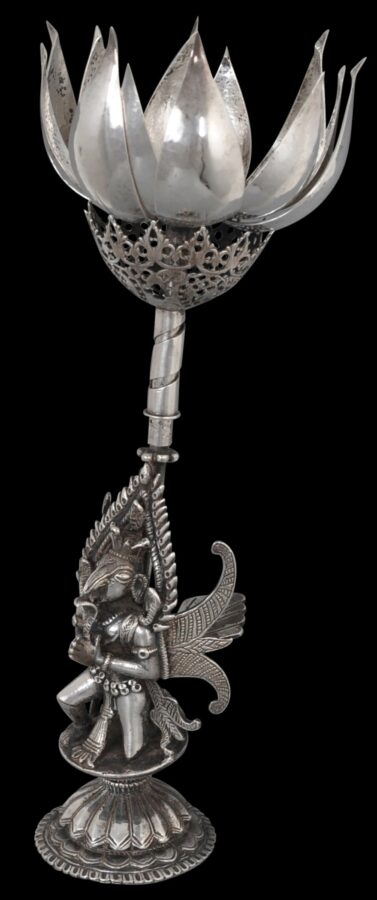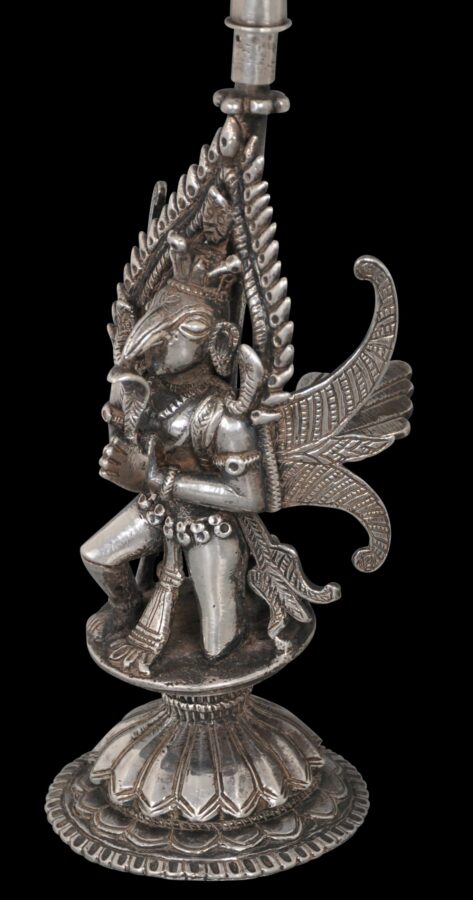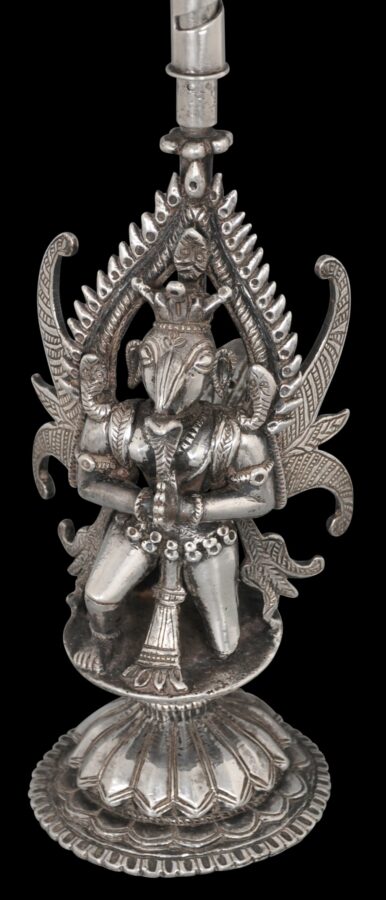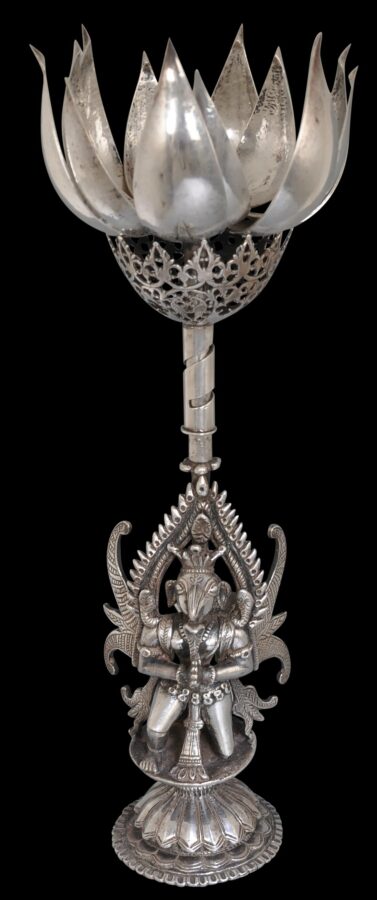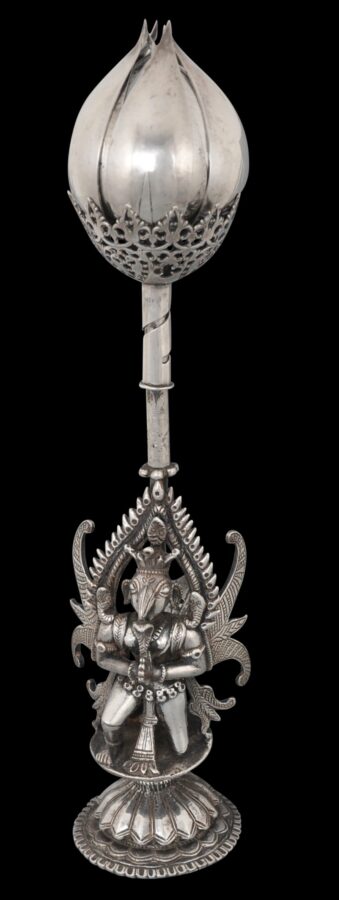This is one the rarest items we have seen from Himachal Pradesh in northern India, in the foothills of the Himalayas. It is a large and heavy lotus flower reliquary or incense burner held aloft by a Garuda figure – all cast in high-grade solid silver, as befitting a religious object (traditionally, silver is seen in Hinduism as a ‘pure’ and purifying metal.) The weight is considerable – more than one-and-half kilograms.
Related versions are known in bronze but this is the first example we have seen in silver.
The elaborately attired Garuda, with prominent, flared wings incised with cross-hatching, kneeling on one knee and with hands clasped in anjali mudra, is shown on a waisted base cast with lotus petals, and in front of a flaming, arched aureole.
The stem of the lotus rises from behind the Garuda. This is topped by the bloom with its elegantly formed petals. Twisting the flower head one way causes the petal to open to reveal the interior. Twist it the other way and the petals close shut, reverting back to bud form. The petals don’t quite close to a perfect, tight bud, but given the age of the item, this is not surprising.
The interior has a small cupped platform on which a small incense block could be placed, or on which a small image of a deity could be kept for veneration.
The exterior silver sheaf which contains the lotus petals is beautifully pierced with flower motifs and cartouches of addorsed birds. The sheaf itself has a crown-like rim from which the lotus petals are emitted.
The form of the Garuda is typical of Himachal Pradesh. Related brass and bronze examples are illustrated in Postel et al (1984, figs 275-280). Pal (2003, p. 59) illustrates a bronze example in the Norton Simon Museum, which is inscribed with a date that is equivalent to 1521.
Overall, this is quite an extraordinary item – very rare, and with a fascinating mechanism for opening and closing the lotus bloom. The item is very heavy for its size – there has been no economising on the quantity of silver used in its manufacture.
References
Pal, P., Art from the Indian Subcontinent: Asian Art at the Norton Simon Museum, Yale University Press, 2003.
Postel, M., A. Neven & K. Mankodi, Antiquities of Himachal, Project for Indian Cultural Studies, Volume 1, Bombay, 1985.


